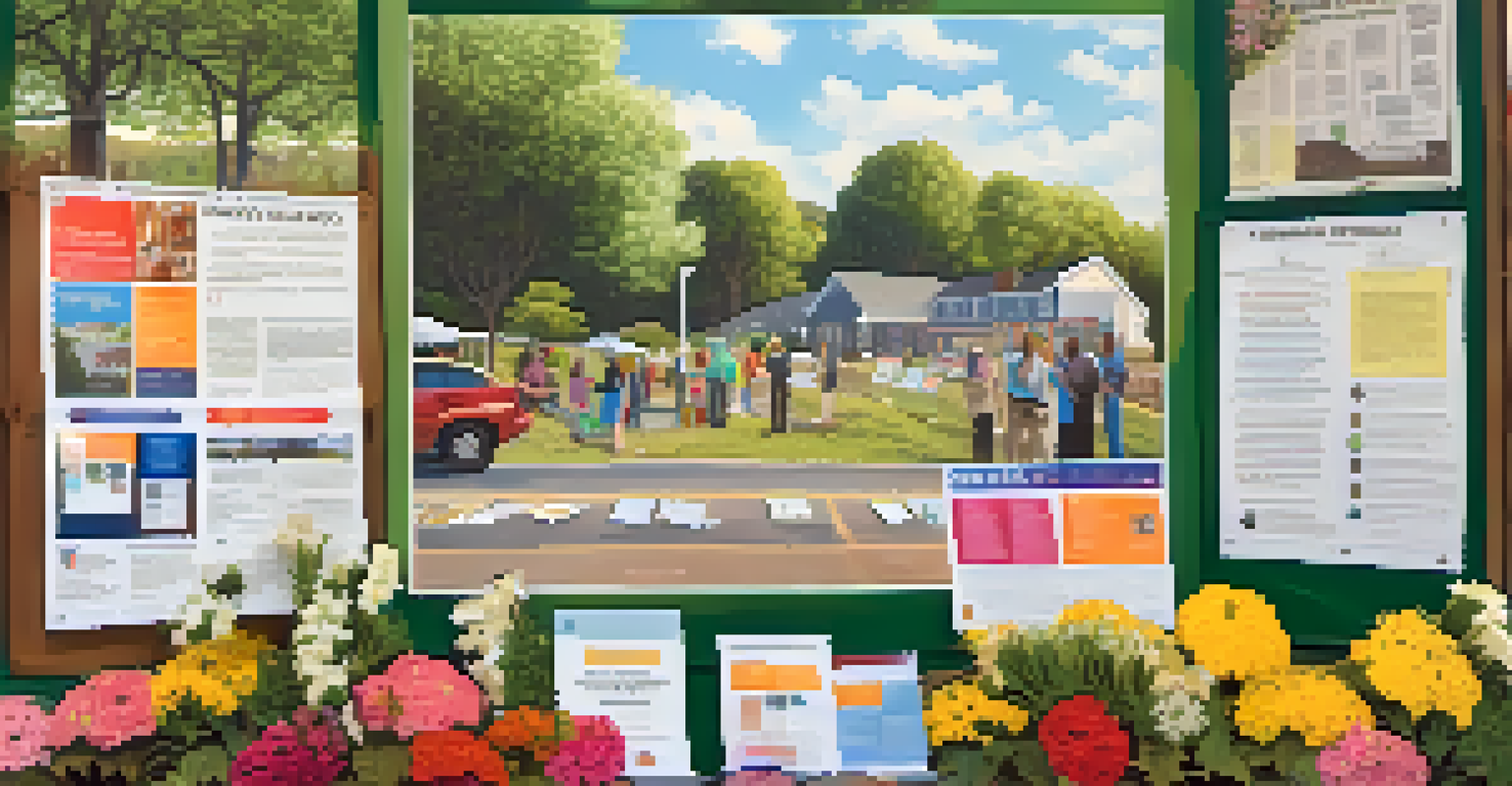The Role of Community in Disaster Preparedness

Understanding Disaster Preparedness and Community's Role
Disaster preparedness involves planning and training to respond effectively to emergencies. It encompasses various phases, including mitigation, preparedness, response, and recovery. Communities play a crucial role in this process, as they are often the first responders during a crisis.
The best way to predict the future is to create it.
When a disaster strikes, the strength of a community can greatly influence recovery efforts. A well-prepared community can mobilize resources, support affected individuals, and provide critical information. This community-centered approach fosters resilience and ensures that no one faces the challenges alone.
Moreover, local knowledge is invaluable during disasters. Community members understand their environment, including risks and vulnerabilities, which is essential for effective planning. By involving locals in disaster preparedness strategies, we can create more tailored and efficient responses.
Building Strong Community Networks for Disaster Response
Strong community networks are vital for effective disaster response. These networks ensure that resources, skills, and information flow freely among members, creating a safety net during emergencies. For instance, neighborhood watch groups or local organizations can coordinate efforts to assist those in need.

Regular meetings and training sessions can enhance these networks, allowing community members to practice response strategies together. This preparation builds trust and familiarity, which are key during high-stress situations. When people know each other, they are more likely to reach out for help.
Community Strength in Crisis
Communities that are well-prepared can effectively mobilize resources and support during emergencies, fostering resilience.
Furthermore, these networks can facilitate communication during a disaster. A community that has established channels, such as social media groups or local messaging apps, can quickly share updates and warnings. This timely information can be life-saving, ensuring everyone remains informed.
The Importance of Community Training and Drills
Training and drills are essential components of disaster preparedness. Communities that regularly practice emergency responses are better equipped to handle real crises. For example, conducting fire drills or earthquake preparedness sessions can help residents know what to do when disaster strikes.
In the midst of chaos, there is also opportunity.
These training sessions not only provide practical skills but also help to build confidence among community members. Knowing how to respond can alleviate panic and promote calm during emergencies. Additionally, when everyone is aware of their roles, it enhances coordination and reduces chaos.
Engaging local organizations and experts in these training efforts can further enrich the experience. By learning from professionals, community members can gain insights into best practices and innovative solutions. This collaboration can lead to a more prepared and resilient community.
Fostering a Culture of Preparedness in the Community
Creating a culture of preparedness is about more than just training; it involves instilling a mindset that values readiness. This can be achieved through educational programs, workshops, and community events that emphasize the importance of disaster preparedness. When preparedness becomes a community norm, people are more likely to engage.
Involving schools, local businesses, and community leaders in these initiatives can amplify their impact. For example, schools can incorporate emergency preparedness into their curriculum, while businesses can support training efforts. This collective approach helps raise awareness and encourages widespread participation.
Training Builds Confidence
Regular training and drills equip community members with the skills and confidence needed to respond calmly in emergencies.
Moreover, celebrating preparedness milestones, such as completing training programs or successful drills, can motivate continued involvement. Recognizing efforts fosters a sense of pride and ownership within the community. When people feel invested, they are more likely to participate actively in future preparedness activities.
Utilizing Technology to Enhance Community Preparedness
Technology can play a pivotal role in enhancing community disaster preparedness. From mobile apps that provide real-time alerts to online platforms for resource sharing, technology helps streamline communication and coordination. These tools can be particularly valuable in times of crisis when timely information is crucial.
For example, community alert systems can quickly notify residents of impending dangers, ensuring they have time to react. Social media can also serve as a platform for sharing updates and organizing volunteer efforts. By harnessing these technologies, communities can improve their responsiveness during disasters.
However, it's essential to ensure that all community members have access to these technologies. Efforts should be made to bridge the digital divide, ensuring that everyone, including marginalized groups, can benefit from these advancements. An inclusive approach strengthens the entire community's preparedness.
Encouraging Community Engagement in Disaster Planning
Community engagement is a powerful tool in disaster planning. Involving residents in the decision-making process not only empowers them but also leads to more effective and relevant plans. When people feel their voices are heard, they are more likely to support and participate in preparedness efforts.
Organizing public forums and workshops where community members can share their concerns and suggestions can foster this engagement. By actively seeking input, planners can address specific local needs and vulnerabilities. This collaborative approach creates a sense of ownership and shared responsibility.
Engagement Enhances Planning
Involving residents in disaster planning ensures their needs are met and fosters a sense of ownership and responsibility.
Moreover, engaging diverse groups within the community ensures that all perspectives are considered. By including voices from various backgrounds, planners can develop strategies that are inclusive and equitable. This comprehensive outlook ultimately leads to more resilient communities.
The Lasting Impact of Community Resilience on Recovery
The impact of a resilient community extends far beyond immediate disaster response. When communities are prepared, they not only recover more quickly but also emerge stronger from the experience. This resilience can lead to long-term benefits, such as improved infrastructure and enhanced social bonds.
For example, communities that come together during a crisis often develop deeper relationships, which can enhance collaboration in the future. These connections can facilitate ongoing support and resource sharing long after the disaster has passed. The experience of overcoming challenges can unite individuals in ways that strengthen their community fabric.

Additionally, the lessons learned from one disaster can inform future preparedness efforts. Communities that reflect on their experiences can adapt and improve their strategies, making them even more resilient. In this way, a strong community not only prepares for disasters; it actively shapes a safer and more secure future.